Sensors already equip a range of tools to enhance monitoring capacity for conservation. Some of the higher bandwidth technologies, like camera traps and acoustic monitoring systems, have been essential elements of the conservation toolkit for decades, and thus have enough users that we've created dedicated WILDLABS groups to address them. But a whole range of lower bandwidth sensors beyond these core technologies are being increasingly integrated into conservation monitoring systems, and offer rich new insights into the wildlife and ecosystems we're all working to protect. As with many technologies, cost and access have historically been challenges to the adoption of new sensors, but with low-cost and open-source solutions on the rise, we're excited to see what the future of this space holds.
Getting Started with Sensors:
- Watch Shah Selbe's Tech Tutors episode on scaling FieldKit, an open-source conservation sensor toolbox, from a project to a successful conservation tech product.
- Check out our Virtual Meetup about Low-Cost, Open-Source Solutions in conservation tech, including a talk by Alasdair Davies on the Arribada Initiative's work with thermal sensors in early warning systems.
- For a more in-depth introduction, watch the first video in our datalogger mini-series: Freaklabs: How do I get started with Arduino?
In this group, you'll meet others who are using and innovating diverse sensors in their work, discuss ways to make sensors more effective & accessible for conservationists, learn about what sensors are already helping us accomplish in the field, and have the opportunity to ask and answer questions. Join this group to get started!
Header image: Emma Vogel, University of Tromsø
Max Planck Institute of Animal Behavior
Behavioral Ecologist
- 1 Resources
- 1 Discussions
- 14 Groups
Wildlife Drones
Wildlife Drones has developed the world’s most innovative radio animal-tracking system using drones so you can track your radio-tagged animals like never before.


- 18 Resources
- 8 Discussions
- 32 Groups
International Union for the Conservation of Nature (IUCN)
Key Biodiversity Areas Programme Officer, IUCN



- 0 Resources
- 89 Discussions
- 8 Groups
- @raquelgo
- | (she/her/hers)
- 0 Resources
- 0 Discussions
- 17 Groups
American Museum of Natural History
- 1 Resources
- 8 Discussions
- 10 Groups
- @Andrew_Hill
- | He/Him
Open Acoustic Devices
I am co-founder of Open Acoustic Devices, the creators of AudioMoth and HydroMoth. My background is Electronic Engineering and Computer Science.



- 0 Resources
- 10 Discussions
- 2 Groups
- 0 Resources
- 0 Discussions
- 17 Groups
PhD Candidate at University College London. Research and develop wireless sensor networks for biodiversity monitoring. Currently working on a software package for AI bioacoustics classifiers on edge device.
- 0 Resources
- 2 Discussions
- 9 Groups
- 0 Resources
- 0 Discussions
- 1 Groups
Saint Louis Zoo
- 0 Resources
- 0 Discussions
- 13 Groups
- @alex_rogers
- | He/him/his
University of Oxford
I am a Professor of Computer Science at the University of Oxford where I work on developing novel low-cost conservation technology (including AudioMoth and SnapperGPS).



- 0 Resources
- 21 Discussions
- 3 Groups
- @PshemekZ
- | he/him/his
IT + nature
- 0 Resources
- 7 Discussions
- 8 Groups
Article
As pressure on marine resources increases, fishers have to explore deeper and deeper waters to make a living. What does this mean for Belize’s deep-sea sharks? In an effort to understand the threats to these animals,...
26 September 2017
Article
Human-wildlife conflict can be difficult to understand without knowing its impact on people and communities. In this case study, authored by community member and Human Wildlife Conflict Tech Challenge coordinator Femke...
19 September 2017
Funding
The European Space Agency is calling for Kick-Start ideas to leverage space technology for wildlife protection. Three main topics of interest have been identified: 1) Wildlife monitoring, tracking and inventory, 2)...
5 July 2017
Its been a busy couple of months for the Open Acoustic Devices team. They've just returned back from Belize where they have been trialling the new AudioMoth design for gunshot detection. Find out what they've been up to...
27 June 2017
In this From the Field interview, we speak to Eric Becker, a conservation technology engineer at the World Wildlife Fund US. He talks about his work in technology design and the key challenges he's experienced...
22 May 2017
In this From the Field interview, we speak to Dr. Raman Sukumar, a world renowned expert on Asian elephant conservation. He shares his thoughts on how technology could be used for mitigating elephant-human conflict, and...
5 April 2017
How many samples do you hope to collect on your next field assignment? 50, 100 or 1000? How about billions. It may seem overly optimistic, but as Dr Phil Wilkes explains, that’s the reality when using Light Detection...
4 April 2017
Researchers have identified 15 emerging risks and opportunities for species and ecosystems around the world in a recent horizon scanning exercise.
31 March 2017
Satellite tracking is the state of the art of technology for mapping wildlife movement. But what if your budget is not state of the art? In our second From the Field interview, we're talking with WILDLABS member and GIS...
29 March 2017
Most people assume that research equipment is expensive and complicated. Yet it doesn’t need to be and the noise egg is a perfect example of this. It consists of a watertight container (as used by scuba divers) and the...
27 March 2017
In our new From the Field series, we're speaking with WILDLABS members to discover how they use technology in their work. Through these interviews we will be showcasing the variety of technologies our members are...
22 March 2017
Are you ready for this year's #Tech4Wildlife Photo Challenge? In anticipation, we're counting down our ten favourite entries from last year. Do you think you can top these?
1 March 2017
November 2023
event
16 Products
Recently updated products
117 Products
1 R&D Projects
81 Organisations
Recently updated products
Recently updated R&D Projects
Recently updated organisations
| Description | Activity | Replies | Groups | Updated |
|---|---|---|---|---|
| Thanks Phil - I have e-mailed you.Peter |
|
Animal Movement, Sensors | 3 weeks 1 day ago | |
| One of our goals with explorer.land is to bridge satellite data and on-the-ground perspectives — helping teams combine field updates,... |
|
AI for Conservation, Geospatial, Open Source Solutions, Sensors | 1 month ago | |
| True, the US ecosystem is a challenging space right now, for basically all sectors. We should not let the US chaos prevent us from engaging with opportunities in other... |
|
AI for Conservation, Camera Traps, Connectivity, Drones, Emerging Tech, Ethics of Conservation Tech, Marine Conservation, Sensors | 1 month 1 week ago | |
| Hi WILDLABS Community,I’m Simon Juma from Kenya, working on a project to track and manage Red-billed Quelea birds, which... |
|
AI for Conservation, Sensors | 2 months ago | |
| Thank you! I will follow up by email. |
+8
|
Animal Movement, Conservation Dogs, East Africa Community, Geospatial, Sensors, Women in Conservation Tech Programme (WiCT) | 2 months 1 week ago | |
| Thanks Jack, that's an interesting repo. |
|
Sensors | 2 months 2 weeks ago | |
| Sure, Akio! Happy to answer!1. Yes, something like that. The few existing i guess applied already for GPS collar (literally collar) that usually for big cats and some other big... |
|
Sensors, Animal Movement, Open Source Solutions | 2 months 2 weeks ago | |
| How much does it cost to incorporate machine learning into your conservation drone geospatial analysis? How does it speed up your workflow... |
|
Conservation Tech Training and Education, Drones, Geospatial, Open Source Solutions, Sensors, Software Development | 2 months 3 weeks ago | |
| Thanks so much for all the advice!! This seems very achievable. We don't mind having the fibre optic fixed in place as we planned to have a shorter one specifically for this... |
|
Sensors, Marine Conservation | 2 months 3 weeks ago | |
| Hi Dan, Not right now but I can envision many uses. A key problem in RS is data streams for validation and training of ML models, its really not yet a solved problem. Any... |
|
Emerging Tech, AI for Conservation, Animal Movement, Build Your Own Data Logger Community, Camera Traps, Connectivity, Conservation Tech Training and Education, Data management and processing tools, Geospatial, Sensors | 3 months ago | |
| @Eric24 The use case is as I wrote to Patrick: "a parent unit in the centre of a conservation area which is to recieve one way packets from child sensor units spread around the... |
|
Sensors | 3 months 1 week ago | |
| Hi Lucille,Thank you for your reply! We’d be really interested in learning more about your developments. We’ll contact you soon to arrange a discussion.Thank you.Best regards,... |
|
Acoustics, AI for Conservation, Sensors | 3 months 1 week ago |
Text Messages from Teenage Gannets
25 April 2016 12:00am
Eggs Eggs and more Eggs
2 March 2016 1:05pm
Underwater sensors
18 March 2016 12:39am
Could Big Data Have Saved Cecil the Lion?
4 January 2016 12:07pm
12 February 2016 7:16pm
It's very interesting what you say about the strength of a name. I do think that anthropomorphism can be a good thing in the case of conservation. By giving Cecil a name and a life story (incidentally a very cosy British name, which is interesting in itself), it brings the issue into emotional focus. We are attracted to characters and stories, not data. The plight of a named lion strikes a stronger chord than the numbing statistic of 600 "un-named" lions dying every year.
So do we care more about nature if we make anthropomorphise it? I think yes, as it creates a relatable personal connection with our own lives.
I'd like to get in touch with you next week as this is an area I am very interested in exploring and I hope I can be of help. Paul
14 March 2016 4:37pm
We're just starting to look a lot at Storytelling in Wildbook (http://www.wildbook.org).
This is what a data profile looks like in Wildbook:
http://www.whaleshark.org/individuals.jsp?number=A-001
While we allow for basic anthropomorphism via nicknaming, it's still a very data centric view of what a combined group of reserchers knows about the animal.
We have experimented with social media profiles which interestingly have an analogous data schema as mark-recapture:
http://fb.wildme.org/wildme/public/profile/WS-A-001
But we want to go ever further with storytelling mediums (e.g., story maps?) that can be automated from scientific data input, especially where cit sci data and reserch data can be reliably mixed.
So in addition to a name, we want to build a relationship through a portrayal of its life history and even potentially a view of the social network of the animal participates in (if such data can be shared safely.).
16 March 2016 7:22am
That's great Jason. I think your approach can be very successful. I'm a little bit familiar with Wild Book through my contacts at IBEIS, who I believe you work with quite closely. I'd love to see how the work we are doing at Internet of Elephants can incorporate whale shark data. I'll message you separately to discuss.
An Internet of pigeons?
14 March 2016 4:16pm
Ecotech Grants from the Captain Planet Foundation
18 February 2016 12:00am
Bringing Conservation Technology to Life
17 February 2016 12:00am
Wildlife Crime Tech Challenge: Winners Announced!
22 January 2016 12:00am
Deep Coral Reef Exploration and Discovery: Two-way Technological Flow
24 December 2015 12:00am
Cheap Space, DIY Imaging and Big Data
21 December 2015 12:00am
The Impact of the Internet of Things
10 December 2015 12:00am
The Social Lives of Conservation Technologies and Why They Matter
2 November 2015 12:00am



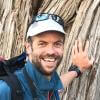

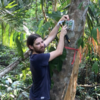

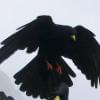
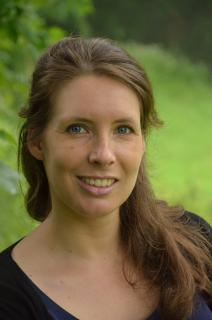
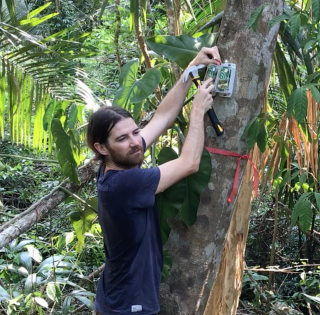


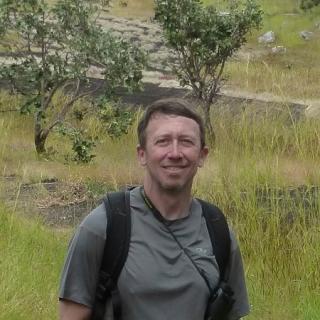




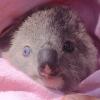
















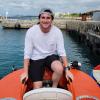






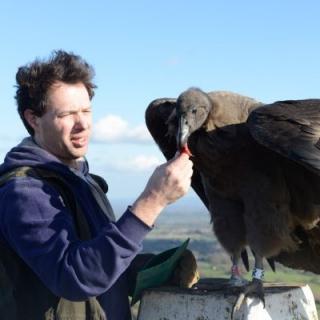

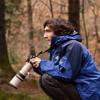


24 March 2016 4:42pm
Latest news about this project was picked up by the BBC world service for a short interview
http://www.bbc.co.uk/programmes/p03nwl8g
You can also read more here:
http://spectrum.ieee.org/geek-life/hands-on/build-an-electronic-vulture-egg